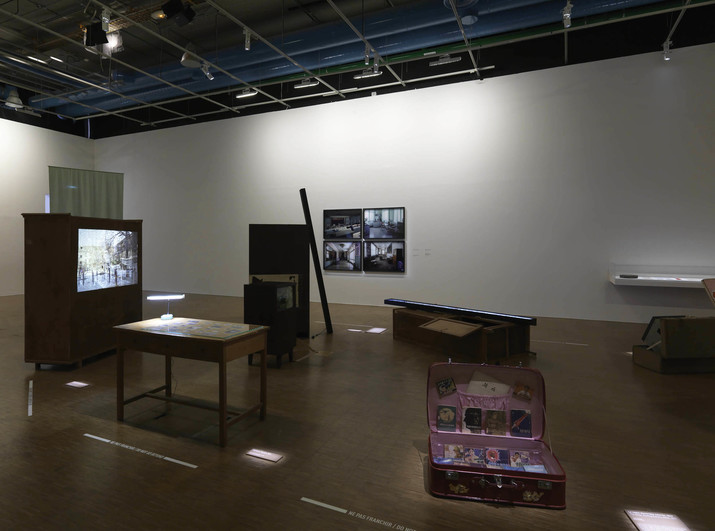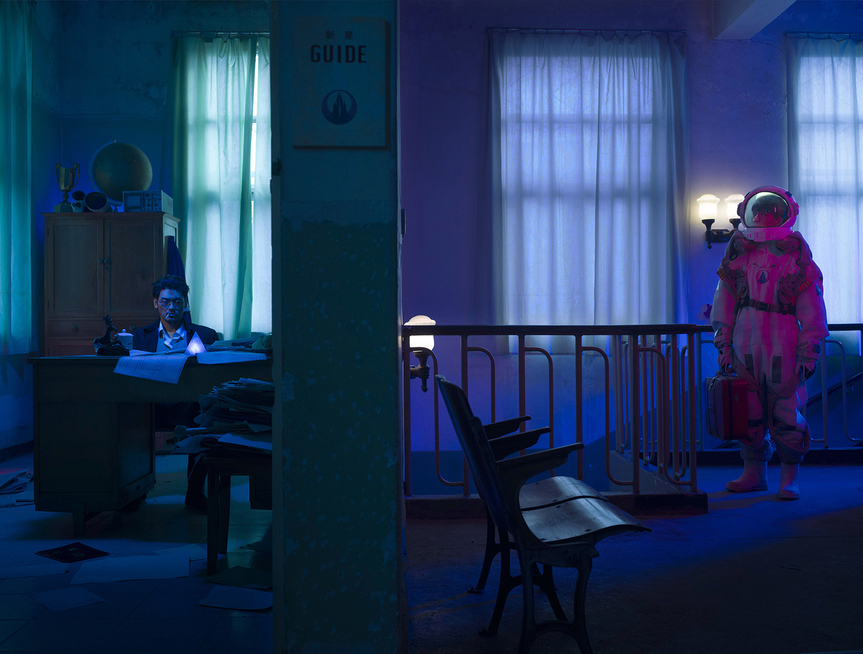-
From Current Issue
-
- Editor’s Letter Fire in the Heart
- Reviews I Gusti Ayu Kadek Murniasih
- Reviews 11th Seoul Mediacity Biennale: “One Escape at a Time”
- Dispatch Networked China
- One on One Monira Al Qadiri on Yukio Mishima
- Essays The rise of independent art spaces in pandemic-era Shanghai
- Features Tuan Andrew Nguyen
- Table of Contents
- Web Exclusives
- Archive
- Subscribe

R
E
V N
E
X
T
Installation view of CAO FEI’s “HX,” at Centre Pompidou, Paris, 2019. Photo by Philippe Migeat. Courtesy Centre Pompidou.
Cao Fei’s multimedia works are centered on China’s social changes since the beginning of the 20th-century, including those spurred by the nation’s adoption of Communism, and later, globalization. Her work often involves the creation of augmented realities. To give form to these worlds, she amalgamates the aesthetic conventions of documentary filmmaking, historical documents, and popular culture. Cao’s most recent exhibition, “HX,” presented by the Centre Pompidou in Paris, likewise reflected these tendencies and methodologies.
“HX” took its name from Hong Xia, a neighborhood in northeast Beijing that was conceived as a hyper-productive workers’ utopia in the 1950s. With assistance from the USSR, numerous electronics factories were constructed, along with mass housing and facilities for workers. Today, however, Hong Xia’s industrial glory has faded. The largely decrepit area has been marked for redevelopment. Navigating the space between utopian dreams and contemporary realities, anguish and joy, historical documentation and fiction, “HX” was the outcome of Cao’s four-year research project on the district.
The exhibition was roughly divided into two rooms. The first space contained archival documents and artifacts. Evincing Cao’s painstaking research, books, newspaper articles, magazines, films, photographs, drawings, and other materials told a coherent story of the Sino-Russian alliance during the Cold War, and elucidated the Communist vision of scientific advancement, which was forced on the Hong Xia workers. These archival fragments were arranged in a variety of forms. Some found documents and objects were shown in glass vitrines. More creative installations included that of scanned photos projected onto furniture from the 1950s, and video clips screened on monitors protruding from suitcases.
In this first room was a small, unobtrusive doorway, which led visitors to a cinema-like foyer, and a second space where Nova (2019), Cao’s 120-minute feature film, was screened. This cinematic piece—the show’s key work—was complex, visually stunning, and highly engaging. Comprising two narrative threads, it traces the misadventures of a cosmonaut whose time machine is lost in space, thanks to an aborted Russian-led space mission, and the experiences of his father who supervised the project and sacrificed his own son in the name of science. Trapped in the midst of a time-reversion experiment, the cosmonaut has a 40-year “safety” or deferred time period in which he can attempt to find his way back to the present. During this interim, he has the ability to travel in time—back to the past to a bleak workers’ “utopia,” and forward to the post-apocalyptic future. He observes, but is unable to acknowledge, the regret of his father, whose zeal for the space mission was first stoked by his love for a visiting Russian professor. The film’s dramatic cinematography is punctuated by dancing and music of an array of genres, adding to the pathos of the moment or alternatively lightening the tone, and enabling viewers to grasp the non-linear narrative.
Like many of Cao’s works, fiction and reality merge in Nova. The imagined world of Nova Electronics—the company spearheading the development of the time machine—is based on the factories of 1950s Hong Xia. This setting enables viewers to connect with the history of Hong Xia, and moreover, to understand the impact of that era today, including the persistent notion in China’s social consciousness that personal sacrifices must be made in the name of collective progress and ideological ambitions. The film is also a metaphor for the ephemeral nature of national alliances through shared ideologies, and its subsequent impact on human relationships.
Alienation, another theme explored in Cao’s practice, is captured in the protagonist’s often poetic monologue as he traverses barren landscapes. “I feel sorry for time,” he says poignantly. “It can’t take its own life.” Although the cosmonaut doesn’t manage to return to Earth, he does, in the end, find an alternative reality. Is he in heaven, he wonders? The viewer is left with ambiguity.
Cao Fei’s “HX” is on view at the Centre Pompidou, Paris, until August 26, 2019.
To read more of ArtAsiaPacific’s articles, visit our Digital Library.


















